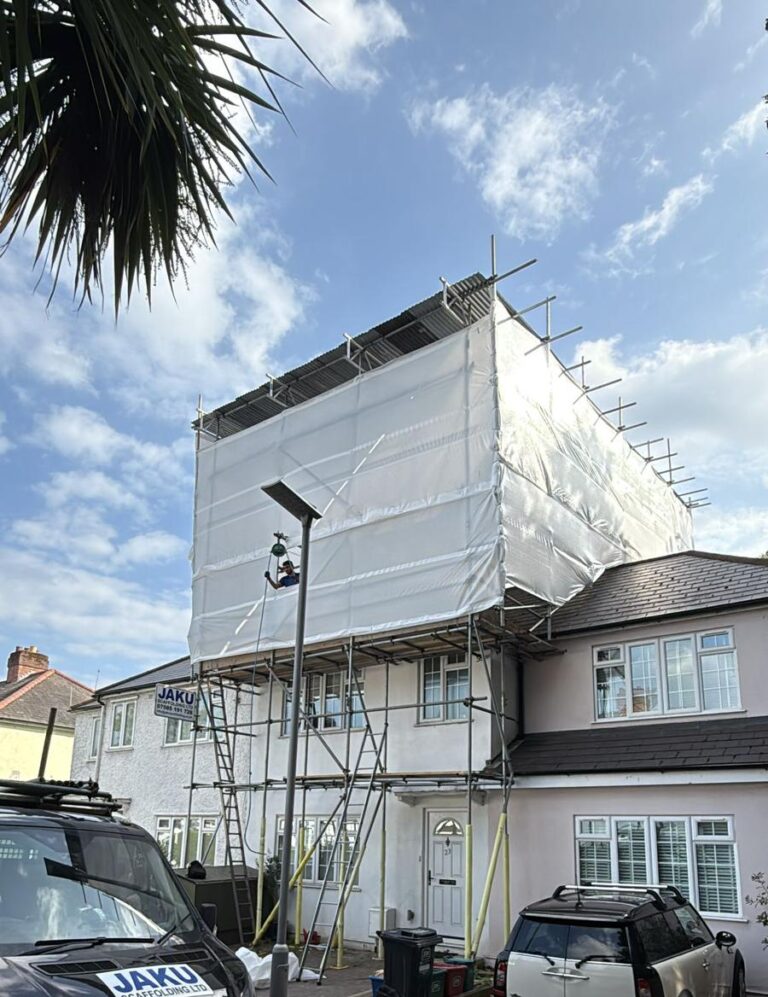Central London’s terraces are some of the most recognisable and historic buildings in the city. From Georgian and Victorian rows to Edwardian and modern townhouse conversions, these properties require careful planning when scaffolding is needed for renovation, roofing, or maintenance. While scaffolding is essential to provide safe and reliable access, working in Central London terraces comes with its own set of unique challenges.
Limited Space and Narrow Streets
One of the biggest difficulties is access. Many terraces are located on narrow, busy streets with limited pavement space. This makes it harder to unload materials, erect scaffolding, and maintain pedestrian flow. Contractors often need to apply for pavement or road occupation licences from the local council to ensure the scaffold can be installed legally and safely. In such areas, compact scaffolding designs or specialist systems may be required.
Protecting Heritage and Listed Buildings
A large proportion of Central London terraces are listed buildings or fall within conservation areas. This means scaffolding companies must work under strict regulations to avoid damaging the façade, brickwork, or decorative features. Additional care is needed when tying scaffolds into delicate structures, and sometimes freestanding or cantilever scaffolding is the only suitable option. Close cooperation with architects, conservation officers, and building control is often required.
High Pedestrian and Traffic Volume
Central London is always busy. Scaffolding projects in terraces must account for the constant movement of pedestrians, cyclists, and vehicles. Edge protection, debris netting, and hoardings are essential to ensure public safety. In many cases, work must be carried out at specific times to reduce disruption, such as avoiding peak commuting hours or coordinating with local businesses and residents.
Access to Roofs and Rear Elevations
Terraces are usually joined together, making rear access particularly difficult. Scaffolding may need to pass over or through neighbouring properties, which requires legal agreements and considerate planning. Alternatively, specialist systems such as cantilever scaffolds, birdcage scaffolds, or temporary roof structures are used to provide secure access without affecting adjoining homes.
Compliance with Regulations
Scaffolding in London terraces must comply with strict health and safety requirements, including HSE standards (TG20:21 and SG4) and any borough-specific regulations. Every project requires detailed risk assessments, method statements, and possibly structural design input to ensure stability on uneven ground or confined sites.
Noise, Vibration, and Neighbour Concerns
Erecting scaffolding in dense residential areas naturally causes disruption. Noise from metal poles, traffic diversions, and temporary loss of light can all be sensitive issues for neighbours. Good communication, professional conduct on site, and swift project completion help reduce complaints and maintain good relationships with residents.
Scaffolding in Central London terraces requires more than just technical skill. It demands careful coordination, respect for heritage, strict safety compliance, and clear communication with all stakeholders. At Jaku Scaffolding, we understand the complexities of working in these environments. Our team designs safe, efficient scaffolding solutions tailored to terraces across Central London, ensuring projects are completed with minimal disruption and maximum safety.
Contact us today for a free quote on scaffolding in Central London terraces.



